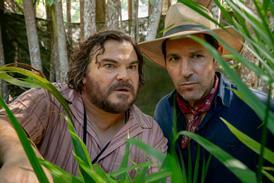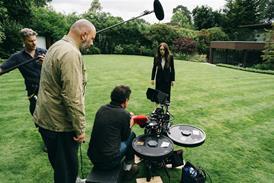Zack Snyder’s The Last Photograph is the latest production drawn to Colombia’s sophisticated film infrastructure, stable funding programme and spectacular locations.

Colombia’s biodiverse locations, tried-and-tested state funding apparatus and ambitions to expand audiovisual production are making the South American country a bustling hub for international partners and local filmmakers.
As of September 2025, the year’s allocation for the two main international incentives — the Colombia Film Fund (FFC) cash rebate ($1.7m/cop$6.7bn) and CINA transferable tax credit ($60m/cop$235bn) — had already been allocated, reflecting demand from a pipeline of shoots that includes Zack Snyder’s independent drama The Last Photograph, which is filming now in the Amazon.
Meanwhile the Film Development Fund (FDC) has provided backing for a raft of Colombian projects including several notable features this year, such as Simon Mesa Soto’s Oscar submission for Colombia and Cannes Un Certain Regard jury prize- winner A Poet, Tomas Corredor’s Toronto International Film Festival selection November, and Juan Carvajal’s SXSW documentary and local box-office hit Salsa Lives (La Salsa Vive).
Located close to regional giant Mexico and the popular production locales of Puerto Rico, Sao Paulo and the Dominican Republic, with its cutting-edge facilities, Colombia has been holding its own for years. A host of experienced production service companies led by Dynamo, Jaguar Bite, AG Studios, 64A Films and others have partnered regularly with Netflix, Amazon MGM Studios, Studiocanal, Lionsgate and independents, handling incentives applications and helping with logistics from travel arrangements to crews. These companies also operate as independent producers.
International productions benefit from Law 1556, which was passed in 2012 and established the FFC, offering 40% and 20% cash rebates for qualifying film and series that demonstrate in-country spend and local partnerships. In 2020, Law 1556 gave rise to the CINA 35% transferable tax credit for qualifying productions. That year, VFX and post-production work also became eligible under Law 1556.
Since 2012, 165 audiovisual projects have been approved, generating $861m (cop3.4tn) in investment and more than 130,000 direct jobs approved under FFC and CINA, according to Proimagenes Colombia. This non-profit oversees the Colombian Film Commission and promotes the country’s audiovisual sector. Roughly 17.5% of projects approved under CINA have been features, rising to nearly 80% under FFC.
Rich rewards
Among recent productions are Lionsgate’s action thriller Shadow Force starring Omar Sy and Kerry Washington, season two of Netflix’s adaptation of Gabriel Garcia Marquez’s Colombian literary classic One Hundred Years Of Solitude and the second season of BBC spy series The Night Manager.
For years, Colombia’s well-connected capital Bogota, with its experienced crews, has hosted productions including Mucho Mas Media’s independent horror Rosario, and producers who venture further afield have also found rich rewards.
Shadow Force and The Night Manager shot in Cartagena on the Caribbean coast. The entire One Hundred Years Of Solitude production has visited multiple locations, from the Tatacoa desert in the Colombian Massif to the west of the country to the Caribbean shores of the north, while The Last Photograph is filming in Leticia on Colombia’s southernmost tip bordering Peru and Brazil.
“We offer a lot of diversity with the coasts, mountains, the Amazon and cities,” says Silvia Echeverri, head of the Colombian Film Commission. “We have been working with the local governments to organise how they can develop and help with the productions.”
Echeverri is building a network with city and regional commissions in Bogota and Medellin. In 2024, the Colombian Film Commission initiated an English-language pilot programme for crews that has trained 810 people on set and through online courses. “Their English is getting better and better,” she says. “They understand that to get more opportunities, they need to communicate in English.” The goal is to run another programme in 2026.
Echeverri notes the benefits to Colombia’s tourism and economy. Since 2012, productions approved under Law 1556 have bought more than 590,000 hotel nights and more than 32,000 airline tickets. “The incentive programme generates an income for the film commission,” she adds. “Two per cent from the tax credits goes back to the commissions, and that’s how we pay for our administration and promotion. We are redirecting most of it into training.”
The FDC, established by Law 814 (‘The Film Law’) in 2003 to incentivise Colombian features and shorts at any stage from development through promotion, derives most of its resources from an 8.5% levy of exhibitors’ net box office from all films released in the country. There have been 2,051 grants under the auspices of The Film Law since inception, which translates to approximately $58m (cop226bn).
Looking ahead to the May 2026 elections, Echeverri says: “There’s no question about the economic impact of the incentives. When a new government comes, we have to explain what we do. We are comfortable with what we’ve been doing and the results we’ve had.”























No comments yet